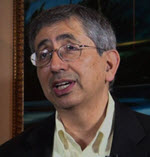The Design of Synergistic Dispersant and Herding Systems using Tubular Clay Structures and Gel Phase Materials project is lead by P.I. Vijay John, Tulane University.
Dispersants are typically solutions containing one or more surfactants dissolved in a solvent. They work by reducing the interfacial tension between oil and water, thereby reducing the work needed to break oil into sufficiently small droplets that are in the colloidal size range and disperse into the water column. The COREXIT class of dispersants (C9500) was used extensively in the Deepwater Horizon incident, and was considered a success in preventing significant amounts of oil from reaching the shoreline. The ecological consequences of deep sea dispersant addition and subsequent oil dispersion are issues of intensive research efforts.
From a technological perspective, there are significant opportunities to improve dispersant efficiency. C9500 and other commercial dispersants are not effective in the dispersion of weathered oil and high viscosity crudes. Some components of C9500, in particular the di-octyl sodium sulfosuccinate (DOSS) component, may persist for extended periods in the marine environment. C9500 also contains a significant amount of paraffin as solvent, and alternative formulations that decrease the solvent content while maintaining efficiency are desirable. Being a liquid solution, significant amounts of dispersant become wasted if encounter with oil is not rapidly realized.
It is therefore proposed to conduct fundamental and applied research to develop dispersant systems that are synergistic with C9500, but that may alleviate many of the disadvantages of C9500 without the need for entirely different chemical components. This is motivated by the realization that many years of research have gone into the development of C9500 which is currently stockpiled along coastlines of offshore oil exploration and production. The proposed research involves fundamental concepts relevant to the stabilization oil droplets by particles (Pickering emulsions) that are relevant to the formation of oilmineral aggregates. While such particles stabilize oil droplets against coalescence, they do not lead to the generation of small droplets which require the surfactants in dispersants to significantly reduce the oil-water interfacial tension. The innovation in the proposed work lies in the use of natural tubular clays known as halloysites which are available in the large quantities necessary for oil spill remediation. When filled with surfactant, the clays not only stabilize the oil drops against coalescence, but also reduce the interfacial tension through a targeted release of surfactant to the oil-water interface. This is Specific Aim 1 of the proposal. Concomitantly, it is proposed to develop a new gel based dispersant that adheres to the oil and is buoyant, thus encountering oil efficiently, and has the potential to disperse weathered oil. The encapsulation of these gels into the tubular lumen of halloysite and the targeted delivery to oil are the topics of Specific Aim 2.
It is also the hypothesis that the presence of a solid phase (halloysite clay tubes) at the oil-water interface will facilitate anchoring of microbial oil degrading communities to the interface and will enhance biodegradation. Specific aim 3 therefore, is to examine the microbial degradation of oil when the interface is stabilized by halloysite. Our innovation lies in the understanding of microbial biodegradation by following the process at the nanoscale using high resolution cryogenic electron microscopy to characterize biofilm formation and the dynamics of oil droplet degradation. It is also the objective that such studies will provide insights into the formation of marine snow.
Click for access to GoMRI’s YouTube videos of RFP-V Projects…
This project was funded by the Gulf of Mexico Research Initiative (GoMRI) in the RFP-V funding program.
The Gulf of Mexico Research Initiative (GoMRI) is a 10-year independent research program established to study the effect, and the potential associated impact, of hydrocarbon releases on the environment and public health, as well as to develop improved spill mitigation, oil detection, characterization and remediation technologies. An independent and academic 20-member Research Board makes the funding and research direction decisions to ensure the intellectual quality, effectiveness and academic independence of the GoMRI research. All research data, findings and publications will be made publicly available. The program was established through a $500 million financial commitment from BP. For more information, visit http://gulfresearchinitiative.org/.

